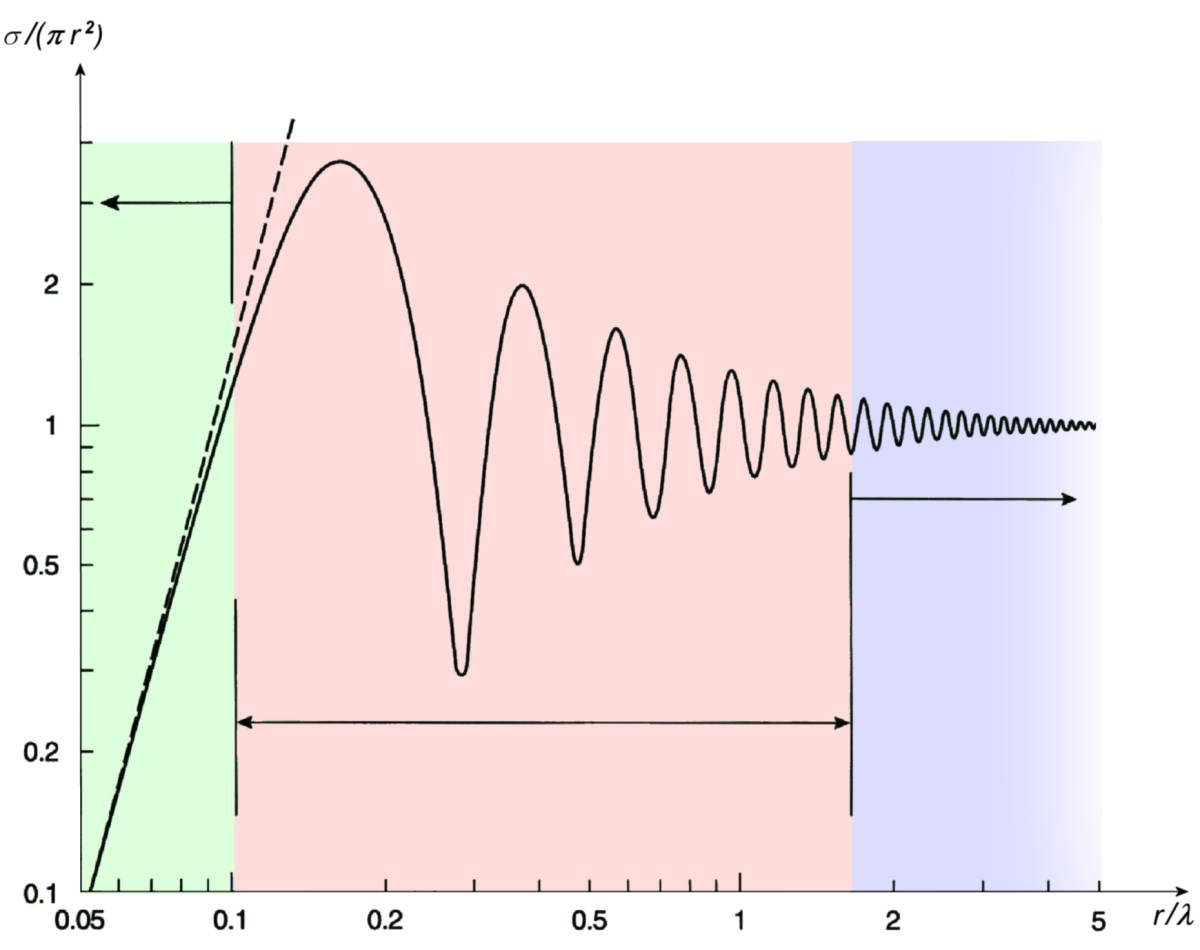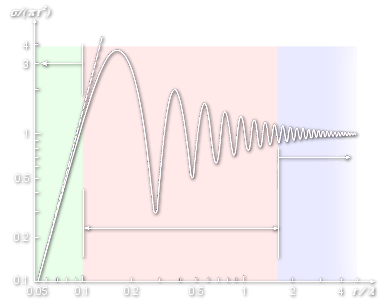Rayleigh- versus Mie- Scattering

Figure 1: Rayleight- and Mie- Scattering, and optical region

Region
region
Figure 1: Rayleight- and Mie- Scattering, and optical region
Rayleigh- versus Mie- Scattering
The following picture shows the different regions applicable to computing the radar cross-section of a sphere. The optical region („far field” counterpart) rules apply when (2π·r / λ) >10. In this region, the radar cross-section of a sphere is independent of frequency. Here, the radar cross-section of a sphere, σ = π·r2.
The radar cross-section equation breaks down primarily due to creeping waves in the area where 2π · r. The largest positive perturbation of the radar cross-section (point A) would be 4 times higher than the radar cross-section computed using the optical region formula. Just slightly a minimum occurs (point B) and the actual radar cross-section would be 0.26 times the value calculated by using the optical region formula. This area is known as the „Mie” or „resonance region”.
If we used a one-meter diameter sphere, the perturbations would occur at 95 MHz, so any frequency above 950 MHz would give predicted results.
The size of the spherical reflection area is smaller than the wavelength in the area of the „Rayleigh-Scattering”. The radar cross-section is calculated the formula σ = π·r2 · 7,11 · ( 2π·r / λ )4 here. The „Rayleigh-Scattering” is a typical application case for weather radar.
Approximately this is lower L- Band still takes the Mie scattering into account at air defense and air traffic control radar sets. There are predominantly optical conditions at frequencies above 1 GHz.
E.g. the ancient Russian VHF-Radars operate at frequencies about 145 to 175 MHz, ie they use the wavelength of about 1.7 to 2.1 meters. This is exactly the position on the second maximum in the diagram (located over the letter B) for the geometric dimensions of a fighter aircraft.
